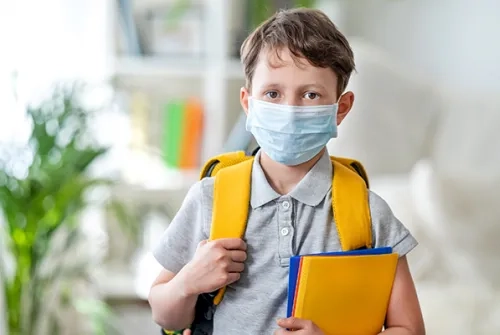Alo Yeditepe
Alo Yeditepe
Why Does Omicron Increase in Children?
Omicron, which is listed as the 5th variant in the 'Variants of Concern' list by the World Health Organization, is also common in children. So, what is the reason? Here is Çıragil's answer…
Since the day the Omicron variant of the coronavirus emerged, it has spread rapidly in many countries, including our country, and the number of cases continues to increase all over the world. Yeditepe University Hospitals Medical Microbiology Specialist Prof. Dr. Pınar Çıragil explained the reasons why this variant is also common in children and the precautions to be taken.
Does It Infect Children More?
The fact that the disease is more commonly seen in children after the emergence of Omicron may not be because the variant targets children more, but to the low rate of compliance of children with mask and distance rules, and to the fact that this age group is not vaccinated. Since children under 11 years of age are not vaccinated, the incidence of intra-familial spread is also increasing.
What Are Omicron Symptoms?
Omicron's symptoms appear in different ways in children. There may be loss of appetite, body aches, headaches, and cough with loss of taste and smell. These complaints may continue for about a week after the children have overcome the disease.
Do Children Get Through Covid Mildly?
The disease has a milder course in children. However, transmission to adults and older age groups is the most important risk. Unvaccinated children go to school and can carry the virus home after being infected.
What Precautions Should Be Taken Against the Omicron Variant?
It is not possible to make a diagnosis without testing in schools and kindergartens, as colds and influenza are also common in children in this age group. At this point, screening tests gain importance. With rapid diagnostic tests, the importance of screenings to be made in schools and kindergartens for children in this age group comes to the forefront.
Should Children Get the Covid Vaccine?
Considering the transmission from children to adults in the Omicron variant, as in other variants, organizations such as CDC and FDA have approved the vaccination of children in the 5-11 age group. In Israel, the USA, and Canada, this group of children have also begun to be vaccinated. After this vaccination, it will actually be easier to prevent transmission. However, no vaccine has yet been defined for this group of children in our country.
Masks Are Still Very Important
Our experiences with the last variant once again showed us the importance of vaccination in the prevention of this disease. Therefore, each individual should do their part in continuing to strictly follow the mask, distance, and hygiene rules. Considering the risk of spreading the disease to children, attention should be paid to compliance with all rules in schools, classrooms should be ventilated frequently, and children should be followed about wearing appropriate masks.
Don't Send Your Child to School Thinking It is a Cold!
It should not be forgotten that Covid-19 cases that develop with the Omicron variant also manifest themselves with influenza and flu-like symptoms. Children with these complaints should definitely not be sent to school and should be allowed to rest at home. Thus, possible Covid-19 cases, as well as other respiratory viruses, will be prevented from spreading among children.
Press Coverage: sozcu
About
Faculty and Year of Graduation:
Çukurova University Faculty of Medicine, 1990
”
See Also
- What is the Eris Variant? What are the symptoms of the Eris Variant?
- Covid-19 Variants
- Are Vaccines Effective Against Delta Plus?
- How Effective Are Vaccines Against New Variants?
- Rules to be Followed in Shopping Malls
- Masks and Gloves Thrown Onto the Street Pose Danger
- Common Misconceptions About Coronavirus
Alo Yeditepe




